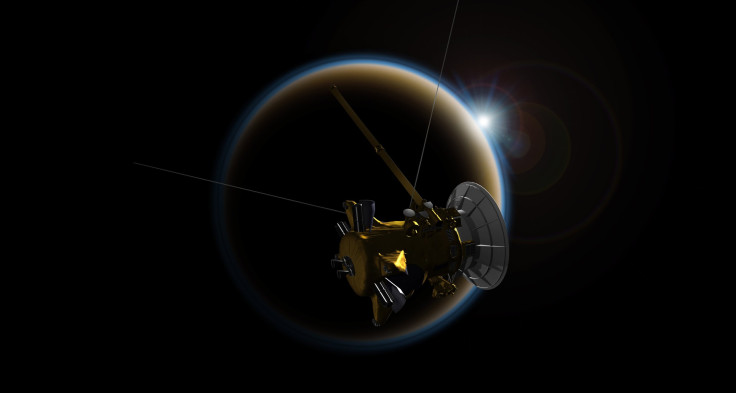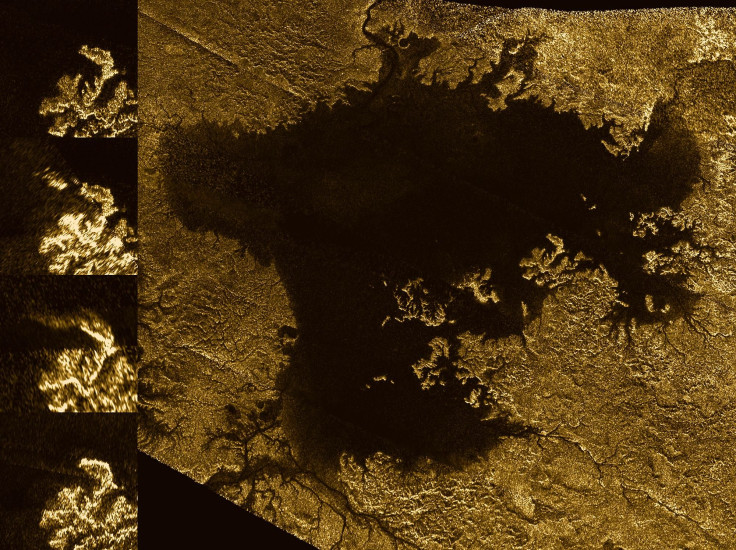NASA's Cassini To Make Its Final Close Flyby Of Saturn's Moon Titan

Saturn’s largest moon Titan is a truly alien world. It is the only other world known to us where lakes, rivers and waterfalls play a crucial role in shaping the surface, but unlike those on Earth, these are made of methane and ethane — the presence of which has led scientists to speculate about the existence of life in them.
This weekend, in a fresh attempt to peer through the haze enshrouding the moon, NASA's Cassini spacecraft will make its final close flyby of Titan. During the flyby, which will take place at 2:08 a.m. EDT, Sunday, the Cassini will pass as close as 608 miles above Titan's surface at a speed of about 13,000 miles per hour.
"The flyby is also the gateway to Cassini's Grand Finale — a final set of 22 orbits that pass between the planet and its rings, ending with a plunge into Saturn on Sept. 15 that will end the mission," NASA said in a statement released Wednesday. "During the close pass, Titan's gravity will bend Cassini's orbit around Saturn, shrinking it slightly, so that instead of passing just outside the rings, the spacecraft will begin its finale dives which pass just inside the rings."
According to NASA, the plunge into Saturn is needed to protect the planet's potentially habitable moons, such as Titan and Enceladus.
During its flyby, which would be Cassini's 127th targeted encounter with Titan, the spacecraft will also look for changes in Titan's methane lakes and seas and study the depth and composition of its smaller lakes.
"The radar instrument will also search a final time for Titan’s 'magic island,' a mysterious feature in one of the moon's seas that changed in appearance over the course of several flybys," NASA said. "Scientists hope to gain additional insights to help them determine whether the feature is waves, bubbles, floating debris, or something else entirely."

The disappearance of the so-called magic island, located inside a large lake called Ligeia Mare, was first noticed in 2014. One possible explanation for this phenomenon is bubbles that surfaced due to interactions between the lake's hydrocarbons and nitrogen. Recent experiments have suggested that on Titan, the lakes may occasionally “breathe” nitrogen, and if this is true, it could resolve the mystery surrounding the short-lived magic island.
© Copyright IBTimes 2024. All rights reserved.





















